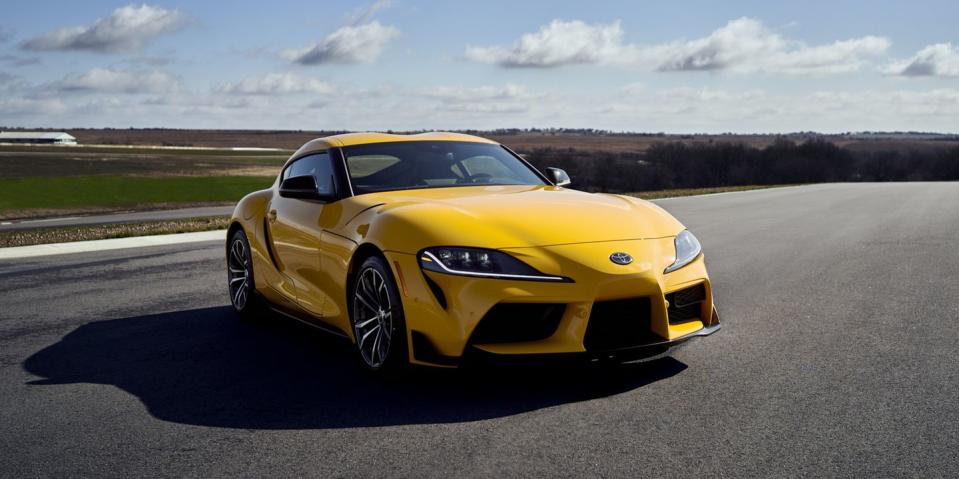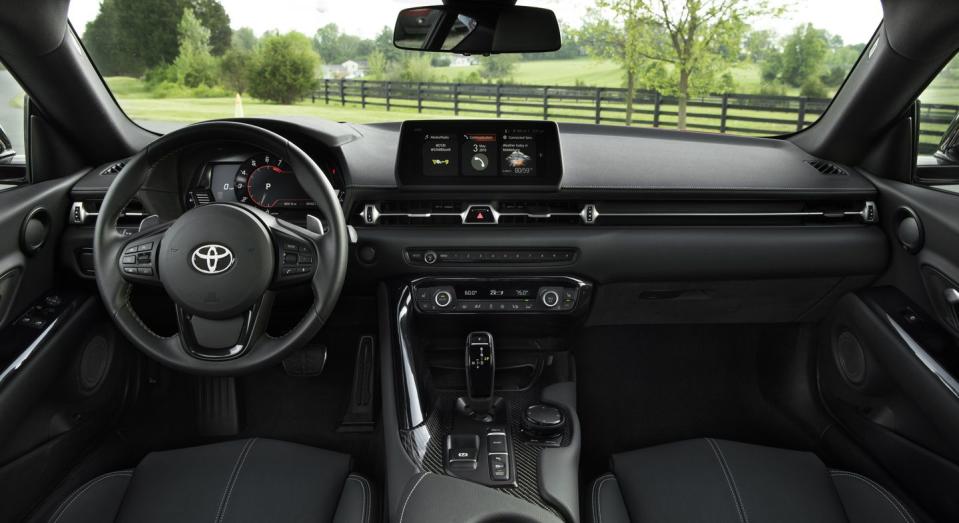My Love-Hate Relationship with the Four-Cylinder Toyota Supra

When Toyota announced the resurgence of the Supra nameplate, JDM fanatics could barely contain their excitement. After years of presuming these JDM legends—the Mazda RX-7, Nissan GT-R, and, of course, the Supra—were mostly dead, the likes of 1990s Japanese performance icons were officially resurrected.
Initial concepts and spy photos showed a silhouette that matched the original curvy coupe styling, as well as the front-engine, rear-wheel-drive design. And Toyota, with some unexpected help from BMW, did in fact deliver an homage to its past in the form of a turbocharged sports coupe.
Since then, the BMW parts bin model has lost some of its panache after a critical initial response. It didn’t come out quite right, at least in the eyes of a crowd who hoped for a big-turbo performance beast, like the heavily modified one they saw on a YouTube street racing video from 2009.
With a 2.0-liter four-cylinder base model and the flagship 3.0 inline-six, Supra owners received either 255 hp or 382 hp from the factory, making for a mediocre horsepower-to-dollar ratio. And only a few thousand have sold each year, with 4952 US units sold in 2022.
The Toyota GR Supra has faced lukewarm reviews since its first drive, and especially once the new Nissan Z was launched. It’s been accused of being too loose and eager to slide and kick its rear end over bumps—a bug of the car’s multi-link rear suspension design and damping that we found to be true on an evening run through Harriman State Park.

The 8-speed ZF automatic transmission has been labeled as a fun inhibitor, taking away from the analog manual driving experience and not replicating the lightning-quick shift speeds found on modern performance dual-clutch transmissions. This too was noticeable during my week-long test with a four-cylinder Supra, as the gear selection felt jumpy and arbitrary at low speeds and a bit laggy at a full clip.
Other complaints levied against the model include its somewhat complicated BMW-derived infotainment setup, cramped cabin, and poor visibility. The ride is harsh and I had to crane my neck to see about half of the poorly placed NYC traffic signals. Even at a mere 5-foot-8, my head rested close to the slanted roof.
Are enthusiast buyers likely to complain about that sort of stuff? Probably not—it is a sports car after all—but that doesn’t absolve Toyota of its responsibility to get it right. Compared to cars like the modern-day Ford Mustang GT or Porsche Cayman, the $54,095 six-cylinder Supra 3.0 feels like a compromise on either end of the spectrum.
For $39,720, you could get a classic American muscle car with a 450-hp, 5.0-liter American-made V8. Or you could pay a premium for the $64,850 Porsche Cayman and receive one of the sharpest handling, track-ready cars on the market.
And this is exactly why I think the four-cylinder Supra 2.0 makes the case for itself in price, performance, and nostalgia. At $44,040, make no mistake, the Supra 2.0 is still a pretty penny, especially at a time when loans are pricey and dealer markups are everywhere. But cars priced at $44,000 and $55,000 sit in different classes of affordability. You buy what you can afford.
These customers specifically want a Supra and likely are not cross-shopping a BMW M240i, Toyota’s own GR86, or a hot-hatch, or even a Mustang. To many buyers, it’s a slice of JDM history in a modern, performance-oriented package.

 Yahoo Autos
Yahoo Autos 